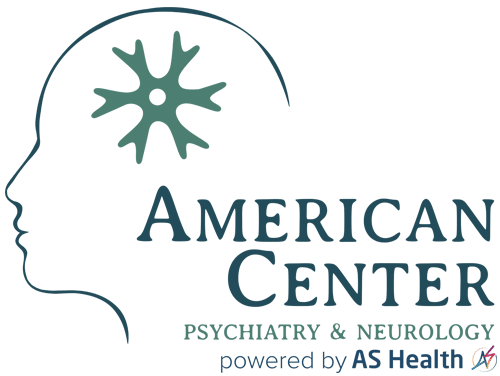Bipolar I
Bipolar I Disorder is one of the most severe forms of mental illness and is characterized by recurrent episodes of mania and (more often) depression. The condition has a high rate of recurrence and if untreated, it has an approximately 15% risk of death by suicide. It is the third leading cause of death among people aged 15-24 years, and is the 6th leading cause of disability (lost years of healthy life) for people aged 15-44 years in the developed world.
Causation
Bipolar I Disorder is a life-long disease and runs in families but has a complex mode of inheritance. Family, twin and adoption studies suggest genetic factors. The concordance rate for monozygotic (identical) twins is 43%; whereas it is only 6% for dizygotic (nonidentical) twins. About half of all patients with Bipolar I Disorder have one parent who also has a mood disorder, usually Major Depressive Disorder. If one parent has Bipolar I Disorder, the child will have a 25% chance of developing a mood disorder (about half of these will have Bipolar I or II Disorder, while the other half will have Major Depressive Disorder). If both parents have Bipolar I Disorder, the child has a 50%-75% chance of developing a mood disorder. First-degree biological relatives of individuals with Bipolar I Disorder have elevated rates of Bipolar I Disorder (4%-24%), Bipolar II Disorder (1%-5%), and Major Depressive Disorder (4%-24%).
The finding that the concordance rate for monozygotic twins isn’t 100% suggests that environmental or psychological factors likely play a role in causation. Certain environmental factors (e.g., antidepressant medication, antipsychotic medication, electroconvulsive therapy, stimulants) or certain illnesses (e.g., multiple sclerosis, brain tumor, hyperthyroidism) can trigger mania. Mania can be triggered by giving birth, sleep deprivation, and major stressful life events.
Symptoms
In adults, mania is usually episodic with an elevation of mood and increased energy and activity. In children, mania is commonly chronic rather than episodic, and usually presents in mixed states with irritability, anxiety and depression. In adults and children, during depression there is lowering of mood and decreased energy and activity. During a mixed episode both mania and depression can occur on the same day.
1) Bipolar mania or hypo-mania
- euphoria or irritability
- excessive talk; racing thoughts
- inflated self-esteem
- unusual energy; less need for sleep
- impulsiveness, a reckless pursuit of gratification (shopping sprees, impetuous travel, more and sometimes promiscuous sex, high-risk business investments, fast driving)
2) Bipolar depression/major depression
- depressed mood and low self-esteem
- low energy levels and apathy
- sadness, loneliness, helplessness, guilt
- slow speech, fatigue, and poor coordination
- insomnia or oversleeping
- suicidal thoughts and feelings
- poor concentration
- lack of interest or pleasure in usual activities
Comorbidity
Comorbidity is the rule, not the exception, in bipolar disorder. The most common mental disorders that co-occur with bipolar disorder are anxiety, substance use, and conduct disorders. Disorders of eating, sexual behavior, attention-deficit/hyperactivity, and impulse control, as well as autism spectrum disorders and Tourette’s disorder, co-occur with bipolar disorder. The most common general medical comorbidities are migraine, thyroid illness, obesity, type II diabetes, and cardiovascular disease.
Associated Mental Disorders
Bipolar I Disorder is often associated with: alcoholism, drug addiction, Anorexia Nervosa, Bulimia Nervosa, Attention-Deficit Hyperactivity Disorder, Panic Disorder, and Social Phobia.
Differential Diagnosis
Bipolar I Disorder must be distinguished from:
Mood Disorder Due to a General Medical Condition (e.g., due to multiple sclerosis, stroke, hypothyroidism, or brain tumor)
Substance-Induced Mood Disorder (e.g., due to drug abuse, antidepressant medication, or electroconvulsive therapy)
Other Mood Disorders (e.g., Major Depressive Disorder; Dysthymia; Bipolar II Disorder; Cyclothymic Disorder)
Psychotic Disorders (e.g., Schizoaffective Disorder, Schizophrenia, or Delusional Disorder)
Since this disorder may be associated with hyperactivity, recklessness, impulsivity, and antisocial behavior; the diagnosis of Bipolar I Disorder must be carefully differentiated from Attention Deficit Hyperactivity Disorder, Conduct Disorder, Antisocial Personality Disorder, and Borderline Personality Disorder
Bipolar II
The term bipolar II was first used about 30 years ago to differentiate patients with recurrent depressive episodes and hypomania from those with classic bipolar disorder-bipolar I, with both depressive and manic episodes-and from those with recurrent major depression. Bipolar II disorder is recognized as a distinct subtype in the DSM-IV classification. The concept of a trichotomy of mood disorders-bipolar I, bipolar II, and unipolar major depression-has been supported by studies that found distinct patterns of symptoms and familial inheritance for bipolar II disorder. Preliminary imaging and biochemical studies that have separately examined subjects with bipolar I and bipolar II disorders have found differences in these groups that further support the view of bipolar II disorder as a discrete diagnostic entity.
One clinical feature that has consistently appeared to differentiate patients with bipolar II disorder from those with bipolar I disorder or unipolar depression is the risk of suicide, which appears to be elevated in this group. Risk of suicide was higher for patients with bipolar depression than for those with unipolar depression. The risk was significantly higher for those with bipolar II disorder; when the results of all the studies were combined, 24 percent of patients with bipolar II disorder had experienced suicidal ideation or a suicide attempt, compared with 17 percent of the patients with bipolar I disorder.
Among studies of completed suicides, only two have separately reported the presence of bipolar I disorder, bipolar II disorder, and unipolar depression in the samples. In one study, 46 of 100 consecutive suicide victims had bipolar II disorder, while only one had bipolar I disorder and 53 had unipolar depression. In a Swedish sample of 25 suicide victims, nine had bipolar II disorder, two had bipolar I disorder, and 14 had unipolar depression. Because bipolar II disorder is much less prevalent than unipolar depression in the population, these data suggest a clear elevation in the risk of suicide among patients with bipolar II disorder, but not among those with bipolar I disorder.
For more information on Bipolar Disorder, please click on the following links:


